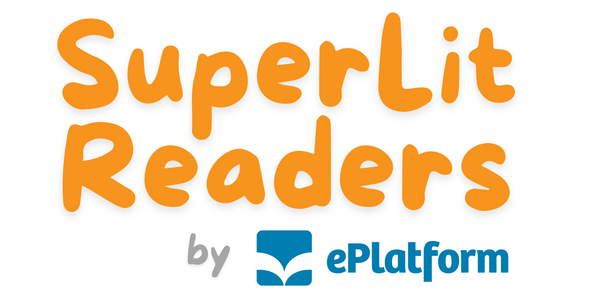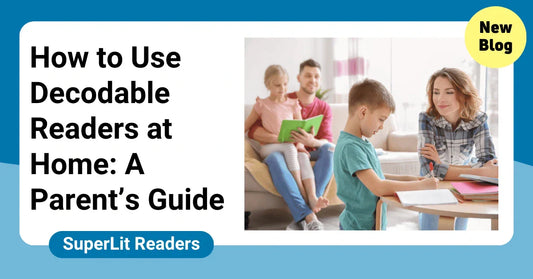Using Decodable Readers for Secondary Students
Overview of this Blog:
Teaching secondary students in New Zealand who still need phonics instruction? You're facing a unique challenge that requires both sensitivity and strategic thinking. While decodable readers are often associated with primary classrooms, they can be incredibly powerful tools for older students – when used thoughtfully. This guide shows you how to implement decodable readers with secondary students while maintaining dignity, engagement, and accelerated progress.

Table of Contents
- The Secondary Reading Reality
- Why Decodable Readers Work for Older Students
- Making Decodables Age-Appropriate
- Implementation Strategies That Work
- Maintaining Engagement and Motivation
- Differentiation for Diverse Needs
- Assessment and Progress Monitoring
- Classroom Management Considerations
- Final Thoughts
The Secondary Reading Reality
Let's address the elephant in the room: having secondary students who can't read fluently is more common than many people realise. These aren't students who are "lazy" or "unmotivated" – they're often bright, capable young people who simply missed crucial foundational reading skills along the way.
Common profiles of secondary students who need decodable readers:
- Students with undiagnosed or under-supported learning differences
- English language learners still developing phonics skills
- Students who moved frequently and experienced gaps in instruction
- Those who learned to memorise words but never mastered decoding
- Students returning to school after extended absences
The key insight? Age doesn't determine reading instruction needs – skill level does. A 15-year-old who can't decode multisyllabic words needs the same systematic phonics instruction as a 7-year-old, just delivered in a more mature, respectful way.
Why Decodable Readers Work for Older Students
Filling the Gaps Systematically
Secondary struggling readers often have significant gaps in their phonics knowledge. Decodable readers allow you to:
- Identify specific gaps: See exactly which sounds and patterns students haven't mastered
- Build systematically: Fill gaps in logical order rather than random remediation
- Provide success experiences: Students can actually read complete texts, building confidence
- Transfer skills immediately: Practice decoding in meaningful context
Building Automaticity
Many secondary students in New Zealand can sound out words slowly but lack fluency. Decodable readers provide:
- Repeated practice with specific patterns
- Gradual increase in text complexity
- Opportunity to build reading stamina
- Development of sight word recognition through repeated exposure
Restoring Confidence
After years of reading struggle, many secondary students have given up. Decodable readers help by:
- Providing immediate success with complete texts
- Showing clear, measurable progress
- Reducing guessing and anxiety
- Building a foundation for accessing grade-level content
Making Decodables Age-Appropriate
Content Considerations
Choose topics that resonate:
- Real-world scenarios (jobs, relationships, current events)
- Age-appropriate interests (sports, technology, social issues)
- Aspirational content (career paths, independence, future goals)
- Culturally relevant themes
Avoid content that feels "babyish":
- Cartoon-style illustrations
- Primary school scenarios
- Overly simplistic moral lessons
- Characters significantly younger than your students
Presentation Matters
Visual design should be mature:
- Clean, sophisticated layouts
- Realistic photography or mature illustrations
- Font sizes that don't scream "beginner"
- Professional-looking covers and formatting
Language should be respectful:
- Use vocabulary appropriate for their age and experiences
- Include complex sentence structures even with simple phonics patterns
- Address mature themes within phonics constraints
- Avoid overly repetitive, sing-song language
Implementation Strategies That Work
Setting the Stage
Be transparent about the purpose:
- "We're going to work on some specific reading skills that will help you with all your classes"
- "These books are designed to target particular patterns you need to master"
- "Think of this as athletic training – we're building specific muscles"
Frame it as skill-building, not remediation:
- Focus on what they're gaining, not what they're missing
- Use sports or music analogies about practice and improvement
- Emphasise the strategic, purposeful nature of the work
Lesson Structure for Secondary Students
Pre-Reading (3-5 minutes):
- Quick review of target phonics pattern
- Preview challenging vocabulary
- Set purpose for reading
- Activate background knowledge
During Reading (10-15 minutes):
- Partner reading or small group reading
- Strategic pausing for discussion
- Immediate support for decoding challenges
- Focus on both accuracy and comprehension
Post-Reading (5-10 minutes):
- Discuss content and make connections
- Review target phonics patterns in context
- Connect to broader reading goals
- Preview next steps
Maintaining Engagement and Motivation
Choice and Autonomy
Provide options whenever possible:
- Let students choose between 2-3 decodable texts at their level
- Offer different response formats (discussion, writing, projects)
- Allow students to set some of their own reading goals
- Give choices in how they demonstrate understanding
Real-World Connections
Link reading skills to their lives:
- "These decoding skills will help you read job applications"
- "Understanding prefixes and suffixes helps with technical manuals"
- "Reading fluency makes studying for your driver's test easier"
- Use examples from social media, texting, and online content
Progress Tracking
Make progress visible and meaningful:
- Use charts that show skill mastery rather than "level"
- Celebrate specific achievements ("You mastered all the 'tion' words!")
- Connect progress to real reading situations
- Set short-term, achievable goals
Differentiation for Diverse Needs
For Students with Significant Gaps
Intensive support strategies:
- One-on-one or very small group instruction
- Slower pacing with more repetition
- Additional phonemic awareness work if needed
- Multi-sensory approaches for kinaesthetic learners
For Students Close to Grade Level
Acceleration strategies:
- Move quickly through familiar patterns
- Focus on complex morphology and advanced phonics
- Bridge to grade-level texts more rapidly
- Use decodables as warm-up for more complex reading
For English Language Learners
Additional considerations:
- Extra vocabulary support
- Cultural context for content
- Opportunities to share their linguistic knowledge
- Connections between English and their first language
Assessment and Progress Monitoring
Diagnostic Assessment
Before starting with decodables:
- Assess phonics knowledge systematically
- Check both nonsense and real word reading
- Evaluate reading fluency and comprehension
- Identify specific gaps and strengths
Ongoing Monitoring
Regular check-ins should include:
- Accuracy with target phonics patterns
- Reading fluency improvements
- Comprehension of decodable texts
- Transfer to other reading contexts
Progress Documentation
Keep records that show:
- Skills mastered over time
- Texts read successfully
- Areas still needing support
- Growth in confidence and engagement
Classroom Management Considerations
Creating a Safe Environment
Establish ground rules:
- Respect for everyone's reading journey
- No judgment about current reading level
- Focus on growth, not comparison
- Confidentiality about individual reading levels
Managing Mixed Levels
When students are at very different levels:
- Use flexible grouping strategies
- Provide independent work options
- Train students as peer tutors
- Have extension activities ready
Addressing Resistance
When students resist using decodables:
- Acknowledge their feelings without judgment
- Explain the purpose clearly and respectfully
- Show them their baseline and set goals together
- Provide evidence of progress regularly
Building Bridges to Grade-Level Content
Gradual Release
Moving beyond decodables:
- Use decodables as warm-up for grade-level texts
- Pre-teach phonics patterns found in content area reading
- Practice decoding skills with vocabulary from other classes
- Gradually increase text complexity while maintaining support
Cross-Curricular Connections
Link phonics skills to other subjects:
- Science: decoding technical vocabulary
- Social Studies: reading primary source documents
- Math: understanding word problems
- Career preparation: reading workplace materials
Final Thoughts
Using decodable readers with secondary students in New Zealand requires courage – both yours and theirs. It takes courage to admit that foundational skills need attention, and courage to do what's necessary for long-term reading success rather than what might feel more age-appropriate in the moment.
Remember: there's nothing childish about learning to read well. These students deserve systematic, explicit instruction that meets them where they are and accelerates their progress. When implemented thoughtfully and respectfully, decodable readers can be the bridge that finally connects struggling secondary readers to the literate world they've been excluded from for too long.
The goal isn't to keep students in decodable readers forever – it's to build the foundational skills they need to access everything else. Every student deserves to experience the power, freedom, and joy that comes with being able to read fluently. Sometimes the most direct path to that goal involves taking what might seem like a step back in order to leap forward.
📚 Ready to support your secondary struggling readers? Explore our systematic decodable reader collections
🎯 Need a clear phonics progression? Download our comprehensive Scope and Sequence
💡 Want more secondary reading strategies? Browse our blog for expert guidance and practical tips
— Every Reader Deserves Success!




